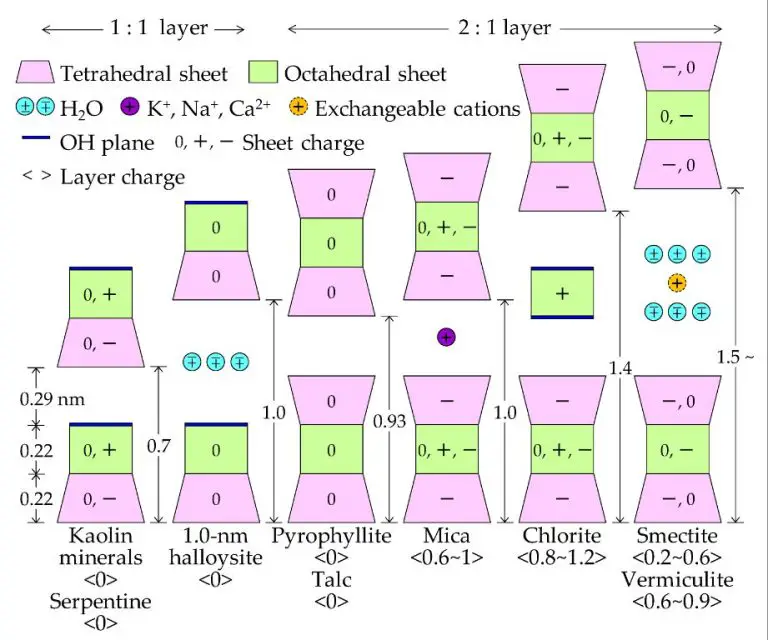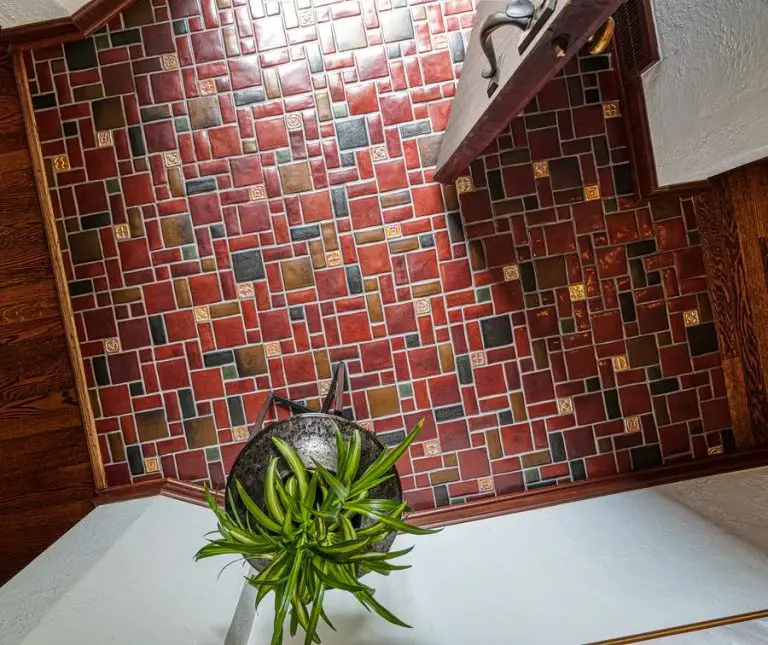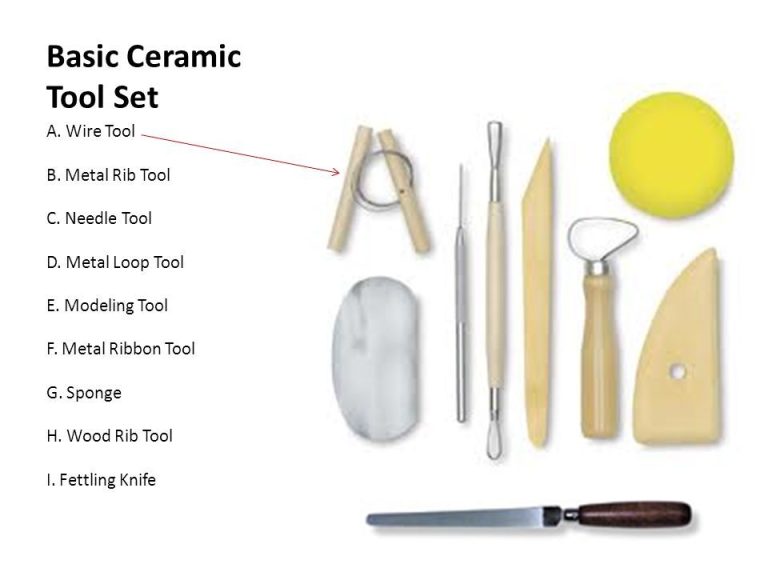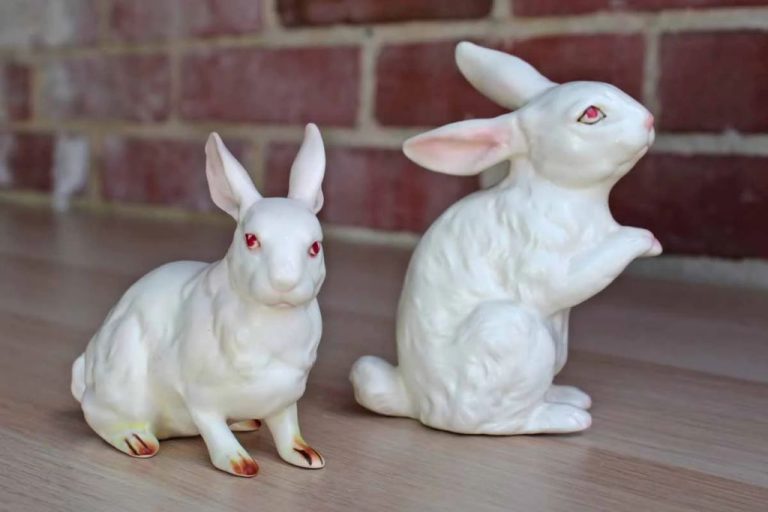What Are The 3 Kinds Of Clay Most Potters Use?
There are many types of clay used in pottery, but three of the most common are earthenware, stoneware, and porcelain. These clays differ in their composition, firing temperatures, and properties. Earthenware clay is fired at lower temperatures, making it more porous and prone to breaking. Stoneware is denser, requiring higher firing temperatures and has greater strength and durability. Porcelain clay has the highest firing temperature range, and is known for its white color and translucency. In this article, we will take a closer look at the properties and characteristics of these three main types of pottery clay.
Earthenware Clay
Earthenware clay is made from secondary, sedimentary clay deposits and has a porous, coarse texture when fired at lower temperatures. It is by far the most common and affordable clay body for potters and ceramic artists today. It has a long history of utility use for baking and storage vessels. According to the Soul Ceramics article on earthenware, it is one of the most ancient types of pottery produced worldwide, traced back thousands of years across many cultures.
The clay does require a coating like glaze to be less porous. But its lower firing temperature and wide availability makes it accessible and economical option for potters looking for a clay with more organic, raw qualities. The Wikipedia article on earthenware notes its general formulation is 25% kaolin, 25% ball clay, 35% quartz and 15% feldspar.
Stoneware Clay
Stoneware clay is made from primary clay deposits and has a higher firing temperature than earthenware, typically around 2100-2372°F (1150-1300°C) according to this source. The higher firing temperature makes stoneware denser and more durable than earthenware. Stoneware clays often retain particles and iron compounds that give the finished product a gray or brownish color.
The higher firing temperature makes stoneware less porous than earthenware. Items made from stoneware clay can hold water without leaking, unlike porous earthenware. Stoneware’s hardness makes it suitable for functional items like crockery and ceramics meant for daily use.
Porcelain Clay
Porcelain clay is made from kaolin clay and is known for being very fine and smooth (Source). It becomes translucent white after firing and is able to withstand very high firing temperatures, up to 2,300°F. Due to its high kaolin content, porcelain clay has very low plasticity and shrinkage. It fires to an almost glass-like state that makes it impermeable to water. This gives porcelain its signature delicate, refined appearance and feel.
The smoothness and whiteness of porcelain clay makes it ideal for creating objects like fine china, dinnerware, figurines, sanitaryware, electrical insulators, and more. However, working with porcelain can be difficult due to its lack of plasticity. It requires careful handling when wet to avoid tearing or deforming. Porcelain also requires high firing temperatures that most hobbyist potters don’t have access to. Commercially produced porcelain mixes provide more plasticity and lower firing temperatures more suitable for home use.
Properties of Earthenware
Earthenware clay is fired at lower temperatures, typically between 1,700°F to 2,100°F (900°C and 1,150°C) or Cone 04-06 (Source). Due to the lower firing temperature, earthenware maintains a more porous structure which makes this type of clay less durable (Source). The open pores allow gases and liquids to seep through earthenware, limiting its functionality for liquid-holding applications. However, the porosity can be utilized for absorbing glazes and stains.
Properties of Stoneware
Stoneware clay requires higher firing temperatures, typically reaching around 2200°F to 2400°F (1200°C to 1300°C). According to the Guide to Kiln Temperature Ranges for Pottery, the average firing temperature for stoneware falls between 2305°F to 2336°F (1263°C to 1326°C).
The higher temperatures make stoneware less porous and more durable than earthenware. Pieces fired at higher temperatures vitrify, which makes them less porous. This gives stoneware better water resistance compared to earthenware. Stoneware’s dense body also makes it more durable for functional ware like mugs, plates, and bowls.
Properties of Porcelain
Porcelain is fired at very high temperatures, typically between 2381°F and 2455°F (1305°C and 1346°C), which makes it a high-fire clay body (All About Slow Firing Porcelain – Get Better Results, https://www.soulceramics.com/pages/slow-firing-porcelain). When fired at these high temperatures, porcelain becomes non-porous and highly durable.
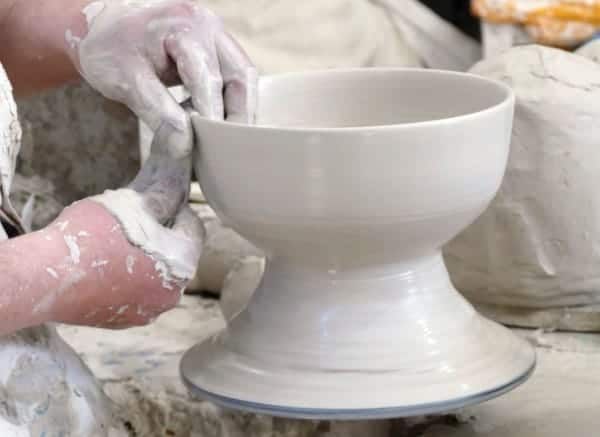
The lack of pores makes porcelain impermeable to water and resistant to stains, providing a smooth white finish. This durability and resistance to water makes porcelain suitable for a wide range of applications including tableware, sanitaryware, electrical insulators, and decorative objects (Firing Temperatures, https://www2.bellevuecollege.edu/artshum/materials/art/husby/firingtemperatures.pdf). When glazed, porcelain can produce a glass-like surface that helps prevent absorption and improves strength.
The high firing temperature allows porcelain to fully vitrify, resulting in low porosity, high density, and high strength. This makes porcelain harder and more durable than other clays like earthenware and stoneware.
Best Uses for Each Type
When choosing which type of clay to use, potters consider the characteristics and intended use for the finished piece. Here are some typical uses for the three main clays:
Earthenware: This clay is porous and low-fired, making it well-suited for everyday functional pottery like mugs, bowls, and vases. The absorbency allows earthenware to showcase colored glazes nicely. Earthenware works for decorative pieces but may not hold up to heavy use or frequent washing.
Stoneware: With greater durability and vitrification than earthenware, stoneware excels at tableware like plates, serving dishes, and teapots. The tighter molecular structure makes it impermeable to liquid while maintaining strength. Stoneware’s versatility allows both decorative and functional pieces for everyday use.
Porcelain: As the most refined clay body, porcelain creates thin, translucent pieces perfect for delicate tableware and detailed sculpture. The high kaolin content fires to a white color, providing an ideal canvas for colored overlays. Porcelain’s fragility suits decorative wares over heavy utility items.
Sourcing the Clay
With the rise of online shopping, purchasing pottery clay has become easier than ever. Many online retailers like Amazon and The Ceramic Shop offer a wide selection of clays at reasonable prices with fast shipping. For bulk orders, online retailers can offer discounts compared to local art supply stores.
However, sourcing clay locally is still a good option, especially for unique clay bodies. The properties of clay can vary dramatically depending on the mineral content in the local soil. Some artisans seek out local clay deposits to maintain regional styles and traditions. But finding high quality, workable clay in nature can be challenging and requires knowledge of geology and testing for impurities. Pugging and preparing raw clay from natural deposits is also labor intensive.
Ultimately the decision between purchasing clay online or sourcing it locally depends on the potter’s specific needs and goals. Online retailers provide convenience and selection, while local sourcing offers opportunities for unique materials and direct connections to the earth.
Conclusion
In summary, the three main types of clay used by potters are earthenware, stoneware, and porcelain. The key differences between them are their firing temperatures and capacities to hold water.
Earthenware is fired at lower temperatures, up to 2,200°F. It is porous and absorbs water easily, making it suitable for flower pots and decorative pieces. Earthenware clay is the most commonly used clay for pottery due to its low firing temperature and availability (https://www.soulceramics.com/pages/types-of-clay).
Stoneware is fired between 2,200°F and 2,400°F making it less porous than earthenware. It can hold some water so it is good for dishes, bowls, mugs, and other functional items. Stoneware comes in natural earthen colors but can be glazed for decorative effects (https://thepotterywheel.com/types-of-clay-for-pottery/).
Porcelain is fired between 2,200°F and 2,500°F making it fully vitrified and non-porous. It does not absorb any water so it is ideal for pots, cups, plates, and art pieces. Porcelain has a white color that can be decorated with glazes and underglazes (https://thepotterywheel.com/types-of-clay-for-pottery/).
Understanding the properties and ideal uses for earthenware, stoneware, and porcelain allows potters to select the best clay type for their projects.

